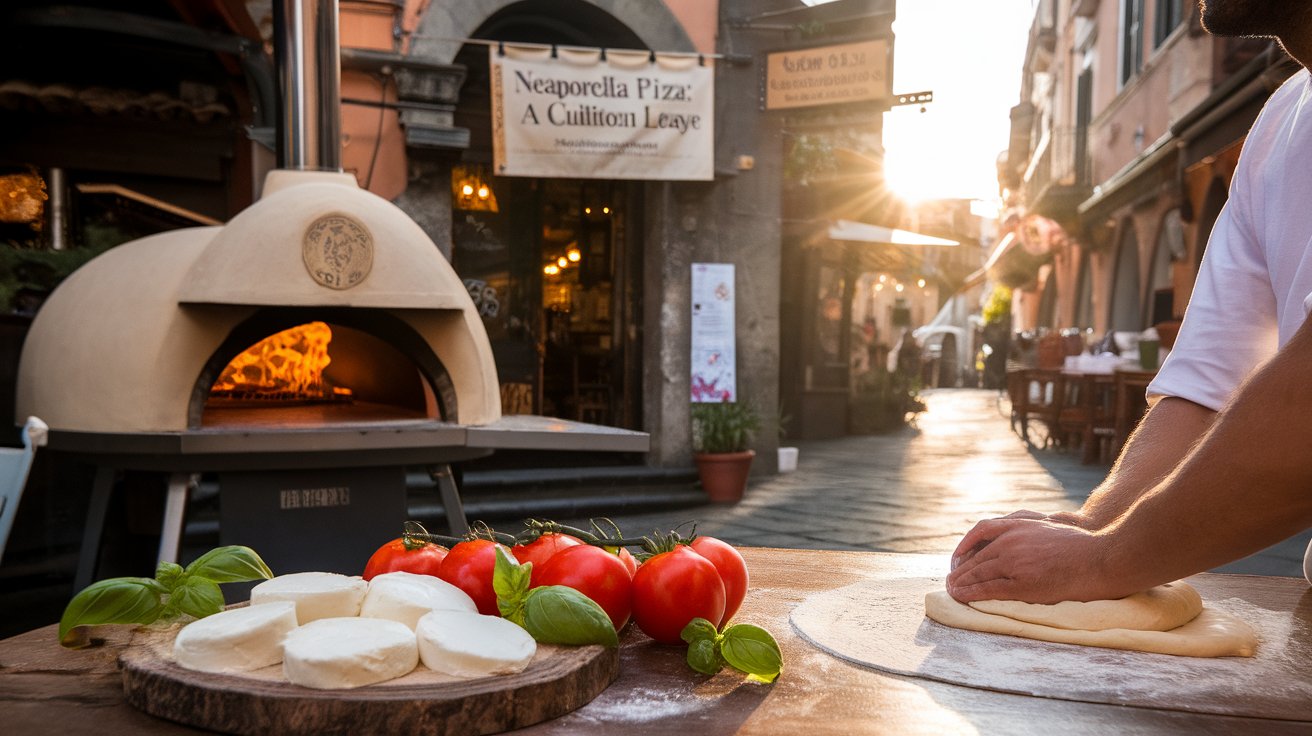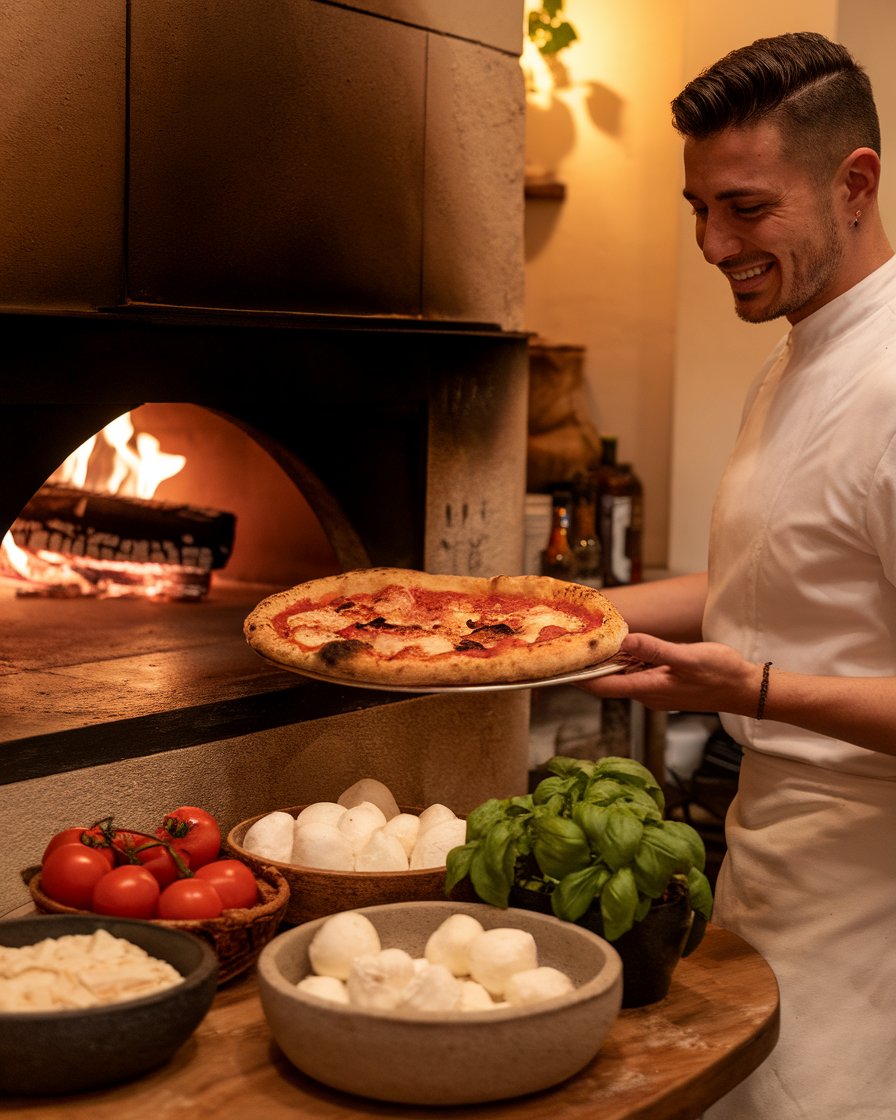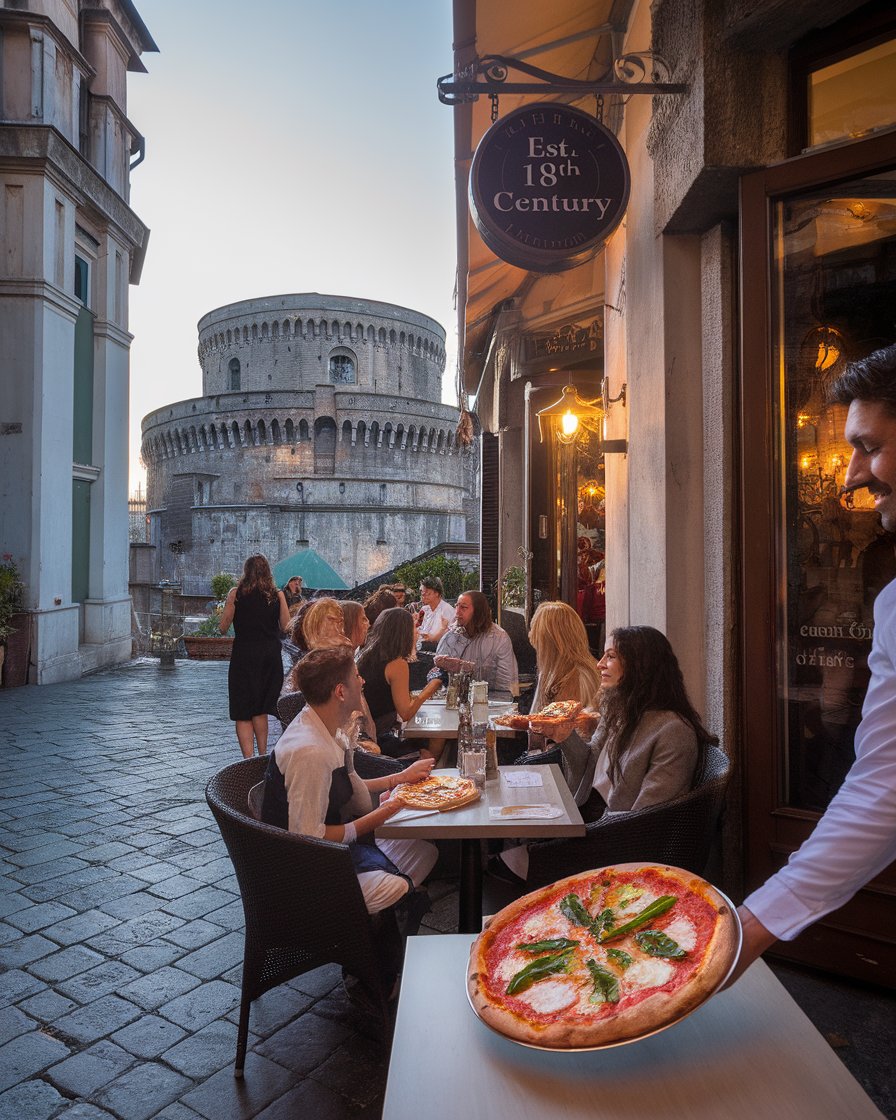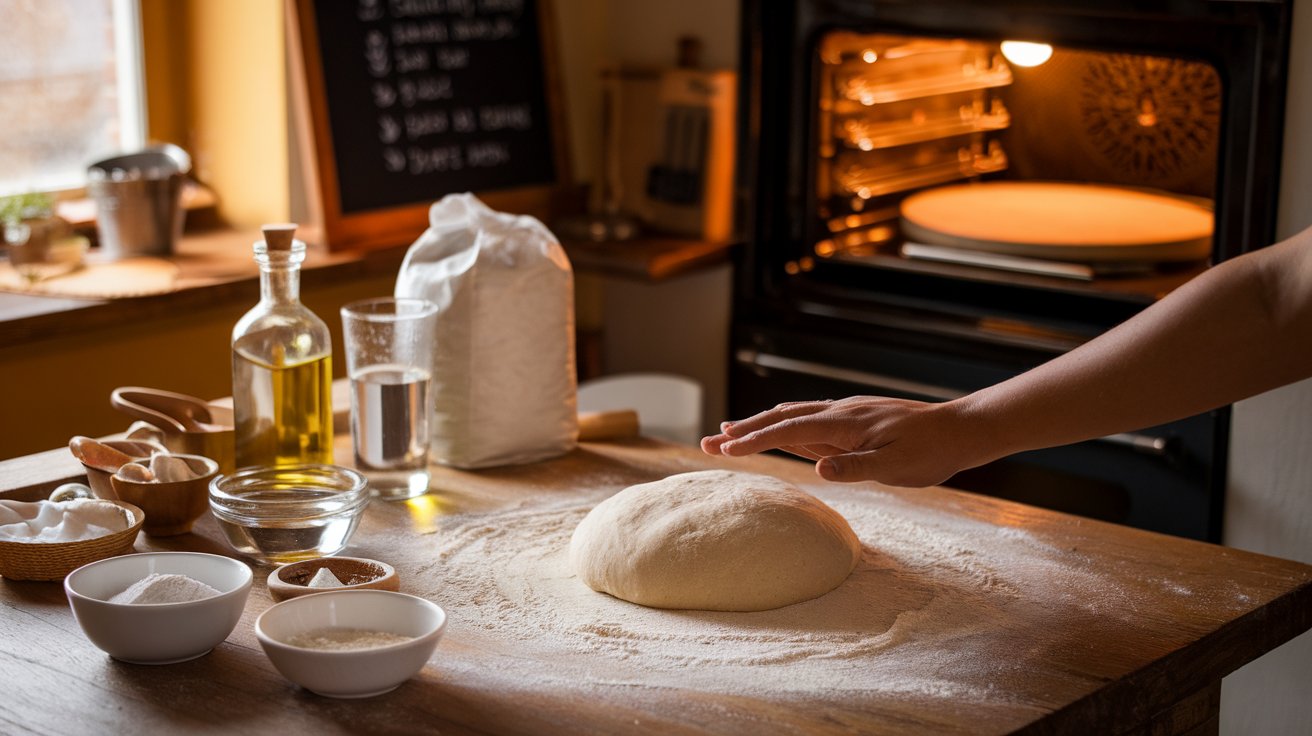Introduction
Neapolitan pizza, known for its rich history and culinary artistry, originated in Naples and has become a beloved symbol of Italian cuisine. The art of Neapolitan pizza is defined by its simple, fresh ingredients such as San Marzano tomatoes, mozzarella, and fresh basil. This pizza, with its chewy crust and perfect balance of flavors, is baked at a high temperature for just 90 seconds, giving it its distinct texture. The traditions behind Neapolitan-style pizza have been passed down through generations, ensuring its legacy in Italian cuisine.
Over the years, Neapolitan pizza has gained global recognition, even being designated as an intangible cultural heritage by UNESCO. Its influence on Italian cuisine is undeniable, and pizzerias worldwide strive to replicate its authentic flavors and techniques. Whether it’s the hand-kneaded dough or the wood-fired oven, Neapolitan pizza continues to captivate food lovers around the world.
Key Takeaways
- Neapolitan pizza originated in Naples and is celebrated for its simple, fresh ingredients like San Marzano tomatoes, mozzarella, and basil.
- The dough for authentic Neapolitan pizza must be hand-kneaded and made from highly refined Italian type 0 or 00 wheat flour.
- Neapolitan pizza is baked in a wood-fired oven at high temperatures for 60 to 90 seconds, resulting in a soft, chewy crust.
- The tradition of Neapolitan pizza has been recognized as an intangible cultural heritage by UNESCO, preserving its techniques and flavors.
- Neapolitan-style pizza continues to influence modern cuisine, with chefs experimenting with new toppings while maintaining its core principles.
- The global popularity of Neapolitan pizza highlights its timeless appeal and enduring legacy in Italian and global culinary culture.
The Art of Neapolitan Pizza: A Masterpiece of Italian Cuisine
Neapolitan pizza is an iconic symbol of Italian cuisine, renowned for its simplicity and fresh ingredients. This style of Neapolitan pizza, which originated in Naples, follows the traditions of authentic Neapolitan pizza, dating back to the 18th century. Authentic Neapolitan pizza is baked at a high temperature for just 60 to 90 seconds, creating its signature soft, chewy crust. The dough must be made using 0 or 00 flour and kneaded by hand or with a low-speed mixer. Toppings like San Marzano tomatoes, mozzarella cheese, and fresh basil and extra-virgin olive oil embody the true essence of Italian cuisine. Naples pizzerias, credited with creating margherita pizza, have perfected this dish, making Neapolitan pizza an integral part of Italy’s culinary heritage. The proper artisan traditions of authentic Neapolitan pizza continue to inspire food lovers worldwide.
The Role of Fresh Ingredients in Neapolitan Pizza
The defining characteristic of Neapolitan pizza is its reliance on fresh, simple ingredients. From the pureed San Marzano tomatoes to the mozzarella made from water buffalo milk, each component is carefully chosen to maintain authenticity. These ingredients must be fresh and of the highest quality to achieve the classic flavor profile associated with authentic Neapolitan pizza. The art of using fresh basil, olive oil, and other fresh toppings reflects the rich culinary traditions of Naples, ensuring that each bite is a true taste of Italy’s best.
The Importance of Proper Baking Techniques
Baking Neapolitan pizza requires precision, especially when it comes to temperature and timing. The pizza is traditionally cooked in a wood-fired stone oven at temperatures exceeding 900°F. It must be baked for no more than 90 seconds, allowing the dough to puff up while keeping the center soft and flavorful. This quick baking process gives Neapolitan pizza its distinct texture: a crispy outer crust with a soft, chewy center. Mastering this technique is key to achieving the perfect Neapolitan-style pizza.
Expanded List: Neapolitan Pizza Essentials
1. Selecting Quality Ingredients
High-quality ingredients like San Marzano tomatoes, mozzarella from buffalo milk, and fresh basil are non-negotiable for authentic Neapolitan pizza.
2. Kneading the Dough by Hand
The dough must be hand-kneaded to create the proper texture. This process helps achieve the signature chewy crust.
3. Using 0 or 00 Wheat Flour
The right type of flour is essential for maintaining the dough’s texture and rise, providing the signature Neapolitan pizza crust.
4. Baking in a Wood-Fired Oven
Achieving the perfect bake requires a wood-fired oven, which reaches temperatures over 900°F, ensuring the pizza cooks in under 90 seconds.
5. Adhering to Time-Honored Traditions
Sticking to the traditional methods of preparation and baking is what sets Neapolitan pizza apart and ensures authenticity.
Neapolitan-Style Pizza: A Journey Through Its Rich Heritage
Neapolitan-style pizza has a fascinating history that began in Naples, where it became a beloved dish in the 18th century. Made with simple yet high-quality ingredients, this pizza represents the artisan traditions of authentic Neapolitan cuisine. Pizza margherita, for instance, was created in honor of Queen Margherita of Savoy, featuring the colors of the Italian flag—basil, mozzarella, and San Marzano tomatoes. Today, the art of Neapolitan pizza has earned recognition as an intangible cultural heritage of humanity, preserving its legacy for generations to come. Pizzerias worldwide strive to replicate the authentic Neapolitan-style pizza, keeping its rich heritage alive.
The Influence of Naples on Neapolitan-Style Pizza
Neapolitan-style pizza is deeply rooted in the culture of Naples, where the dish first became popular. Naples, a bustling port city, was instrumental in introducing tomatoes to Europe in the 16th century, which later became a key ingredient in Neapolitan pizza. The city’s artisan traditions have influenced the way Neapolitan pizza is made, ensuring that each step follows time-honored techniques. The pizza margherita, a tribute to Queen Margherita, symbolizes the Italian flag and reflects the pride Naples takes in its culinary contributions.
The Importance of Proper Baking Techniques
Baking Neapolitan pizza requires precision, especially when it comes to temperature and timing. The pizza is traditionally cooked in a wood-fired stone oven at temperatures exceeding 900°F. It must be baked for no more than 90 seconds, allowing the dough to puff up while keeping the center soft and flavorful. This quick baking process gives Neapolitan pizza its distinct texture: a crispy outer crust with a soft, chewy center. Mastering this technique is key to achieving the perfect Neapolitan-style pizza.
Case Study: UNESCO’s Impact on Preserving Neapolitan Pizza
In 2017, UNESCO recognized the traditional art of Neapolitan pizza-making as an intangible cultural heritage, emphasizing its cultural significance to the world. This designation has played a key role in preserving the techniques and traditions that define authentic Neapolitan pizza, including the use of fresh ingredients, hand-kneaded dough, and wood-fired ovens. Pizzerias around the globe now adhere to strict guidelines to replicate the original methods used in Naples, ensuring the continued legacy of this world-famous dish.
Mastering Neapolitan Pizza: The Essential Ingredients and Techniques
To master Neapolitan pizza, one must focus on the key elements that define this classic dish. The dough must be made from highly refined Italian type 0 or 00 wheat flour, fresh brewer’s yeast, water, and salt. It is then kneaded by hand and formed without a rolling pin, maintaining its traditional texture. The pizza is baked in a wood-fired oven, which reaches temperatures of over 900°F. Toppings like pureed San Marzano tomatoes, fresh mozzarella, and a drizzle of extra-virgin olive oil complete the authentic Neapolitan-style pizza. Understanding these essential ingredients and techniques is crucial to creating a perfect Neapolitan pizza.
Selecting the Best Flour for Neapolitan Pizza Dough
The foundation of any authentic Neapolitan pizza lies in its dough, and choosing the right flour is crucial. Neapolitan pizza dough must be made from highly refined Italian type 0 or 00 wheat flour. This type of flour has a fine texture and high protein content, which allows the dough to stretch easily without tearing. The flour’s unique properties are essential for achieving the perfect balance of softness and chewiness in the pizza’s crust. Using the proper flour ensures that the dough rises properly and forms the desired light, airy texture.
The Art of Hand-Kneading Neapolitan Pizza Dough
Hand-kneading the dough is another critical step in making Neapolitan pizza. Unlike modern techniques that use electric mixers, traditional Neapolitan pizza dough must be kneaded by hand or with a low-speed mixer. This process helps develop the gluten in the flour, resulting in a soft and pliable dough that can be easily shaped. By using these time-honored methods, pizza makers ensure that the dough has the perfect texture and consistency, allowing it to bake evenly and create the desired crust.
“There’s no better feeling in the world than a warm pizza box on your lap.” – Kevin James
How Neapolitan-Style Pizza Revolutionized Italian Cuisine
Neapolitan-style pizza has not only become a global favorite but also played a pivotal role in revolutionizing Italian cuisine. This dish, once considered a humble meal for fishermen and their families, transformed into a culinary masterpiece thanks to its perfect balance of flavors and ingredients. The simplicity of the dough, combined with fresh, quality toppings, created a dish that set the standard for Italian pizza-making. Today, Neapolitan-style pizza is celebrated worldwide, with pizzerias using traditional techniques to maintain its authenticity. Its impact on Italian cuisine is undeniable, highlighting the art of Neapolitan pizza as both a cultural and culinary phenomenon.
Neapolitan Pizza’s Global Influence
Over the years, Neapolitan-style pizza has transcended its humble origins to become a global culinary sensation. Today, pizzerias around the world strive to replicate the traditional techniques that make Neapolitan pizza unique. The simplicity of its ingredients, paired with its distinct texture, has made Neapolitan pizza a favorite among food enthusiasts. This global influence has solidified Neapolitan-style pizza’s place in the culinary world, making it an essential part of Italian cuisine worldwide.
The Evolution of Neapolitan Pizza in Modern Cuisine
While Neapolitan pizza remains rooted in tradition, it has also evolved to suit modern tastes. Chefs have experimented with new toppings and flavor combinations while still respecting the basic principles of Neapolitan pizza-making. This balance between tradition and innovation has allowed Neapolitan pizza to stay relevant in the fast-paced world of modern cuisine. Despite these changes, the core of Neapolitan pizza—its dough, fresh ingredients, and quick baking process—remains unchanged, continuing to captivate food lovers across the globe.
Conclusion
Neapolitan pizza is more than just a dish; it represents a deep-rooted connection to Italian culture and tradition. The precise combination of hand-kneaded dough, high-quality ingredients like San Marzano tomatoes and mozzarella, and the quick baking process in a wood-fired oven create an iconic pizza that has stood the test of time. The respect for tradition ensures that Neapolitan pizza maintains its authentic taste and texture, making it a staple of Italian cuisine.
As Neapolitan-style pizza continues to grow in global popularity, its influence on modern pizza-making is unmistakable. From pizzerias in Naples to kitchens around the world, this style of pizza serves as a culinary blueprint, demonstrating how simplicity and attention to detail can create extraordinary flavors. Its legacy, honored by UNESCO, will continue to shape the pizza world for generations to come.















